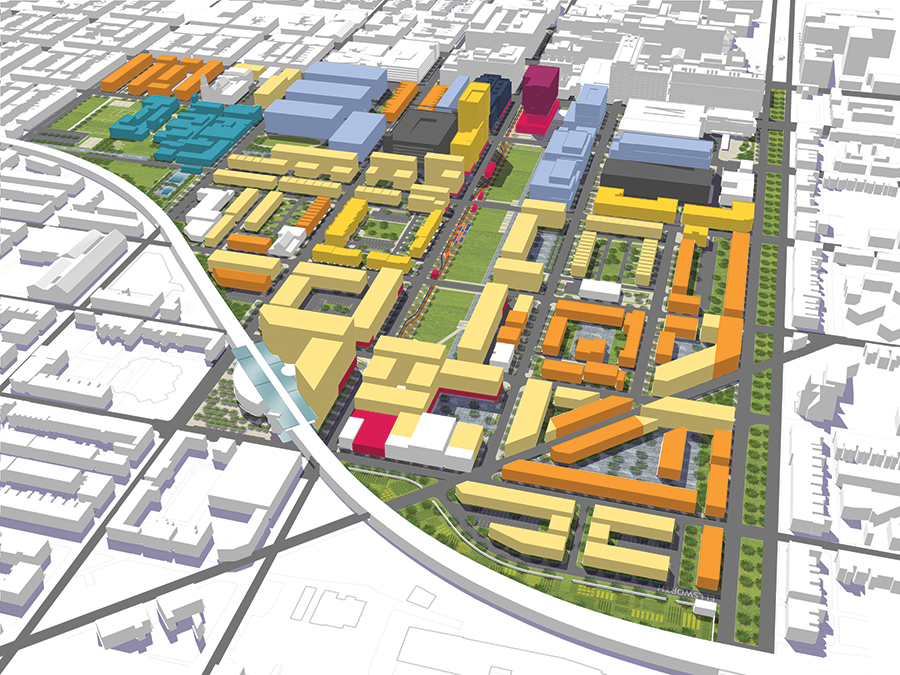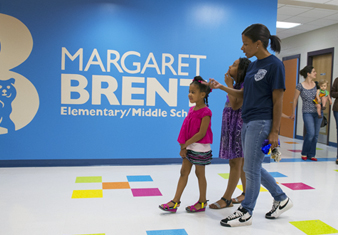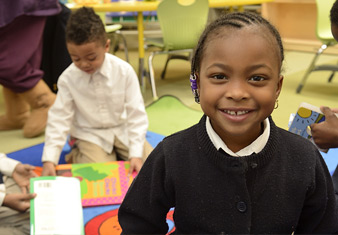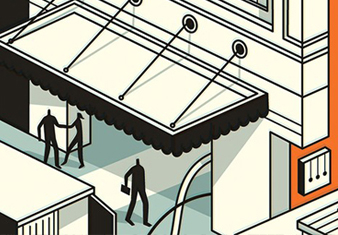
A Tipping Point
Further progress for the East Baltimore Development Initiative.
A public and private investment to date of $917 million, with an additional $240 million pending. A total of 1,700 affordable and market-rate housing units. One hundred thousand square feet of retail space, and 1.6 million square feet of lab and office space.
This year, with major progress having been made on key projects, EBDI is nearing a tipping point.
These are the measures of a multiyear city-led effort, known as the EBDI (East Baltimore Development Initiative), which is working toward the revitalization of an economically distressed, 88-acre neighborhood immediately north of the East Baltimore campus. In an area ravaged by massive job losses, middle class flight, crime and drugs, and property flipping, the city in 2003 started acquiring 2,000 properties, including houses occupied by 740 renters and homeowners. Renters received Section 8 vouchers portable throughout the United States, and homeowners were paid five times the value of their homes, allowing them to relocate to better neighborhoods debt-free. EBDI also provided all families with five years of intensive support services.
 All said, the university has invested or committed roughly $50 million to date in EBDI. And this year, with major progress having been made on key projects, the initiative is nearing a tipping point. In January 2014, the new K-8 Henderson-Hopkins school opened its doors. Walgreens launched a new prototype pharmacy in the neighborhood with an in-store clinic staffed by a nurse practitioner, the first of its kind in Maryland. Across the street, Hopkins debuted a new innovation center—next door to Atwater’s, a popular local eatery that opened to rave reviews. The state opened the $170 million Maryland Public Health Laboratory in the neighborhood this past year. In 2015, EBDI is expecting to break ground on a $10 million, six-acre central park, and a unique collaboration of East Baltimore community development organizations is preparing to build Baltimore’s first ever kitchen incubator at an abandoned water pumping station. In addition to the 540 apartments and homes already built in the area, developers are planning hundreds more units, most for sale at affordable prices. Finally, developer plans for a Marriott Residence Inn at the Johns Hopkins medical campus continue to progress.
All said, the university has invested or committed roughly $50 million to date in EBDI. And this year, with major progress having been made on key projects, the initiative is nearing a tipping point. In January 2014, the new K-8 Henderson-Hopkins school opened its doors. Walgreens launched a new prototype pharmacy in the neighborhood with an in-store clinic staffed by a nurse practitioner, the first of its kind in Maryland. Across the street, Hopkins debuted a new innovation center—next door to Atwater’s, a popular local eatery that opened to rave reviews. The state opened the $170 million Maryland Public Health Laboratory in the neighborhood this past year. In 2015, EBDI is expecting to break ground on a $10 million, six-acre central park, and a unique collaboration of East Baltimore community development organizations is preparing to build Baltimore’s first ever kitchen incubator at an abandoned water pumping station. In addition to the 540 apartments and homes already built in the area, developers are planning hundreds more units, most for sale at affordable prices. Finally, developer plans for a Marriott Residence Inn at the Johns Hopkins medical campus continue to progress.


